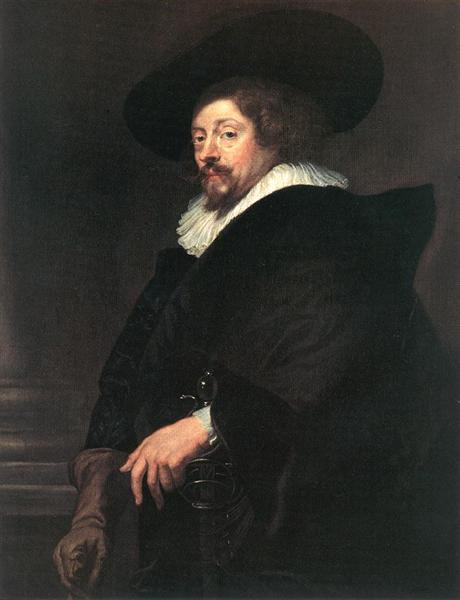Description
The self -portrait of Peter Paul Rubens, made in 1639, is a work that transcends the simple representation of its creator to encapsulate the very essence of a vibrant period of Baroque art. By carefully observing this canvas, we can appreciate not only the remarkable ability of the painter, but also the historical and cultural context in which it was performed. This portrait shows Rubens as a mature and safe man, with an energetic bearing that radiates both trust and introspection.
The composition of this work is rich in nuances, with the artist represented in three quarters, which allows a more intimate and direct vision. Rubens's look, intense and penetrating, seems to connect with the viewer immediately, establishing visual communication that transcends time. The representation of his face, whose factions are precise and living, is complemented by careful attention to detail in his clothing, which is characterized by dark tones and textures that evoke a material wealth. This color use also contributes to the emotional depth of the work; The neutral background, in dark tones, highlights the illuminated figure of the painter, creating a highlight and suggestion of a larger space where reflection can take place.
Rubens manages the chiaroscuro in a masterful way, using light to emphasize the characteristics of his face and his figure, suggesting a rich and cultivating life experience. The color palette, which relies on terrible and warm tones, brings warmth to the paint that surrounds the viewer. This game between light and shadow is a characteristic firm of Rubens, which reflects not only its formation in the workshops of the great masters, but also his personal trip and his evolution as an artist.
In the broader context of Baroque art, this self -portrait is not only a testimony of Rubens's technical virtuosity, but also an affirmation of its capacity for self -expression in a period where the portrait became a vehicle for transmission not only of the identity , but also of social status and personal values. It is important to note that Rubens is one of the most prominent representatives of the Flemish Baroque, and his ability to combine detailed anatomy with emotional expressiveness is immense in this work.
Throughout his career, Rubens made multiple self -portraits, each revealing different aspects of his personality and artistic evolution. In east of 1639, both the artist's maturity and his connection with the world around him are manifested; Nostalgia and reflection are present in the look that leads to the viewer. This self -portrait, like other contemporary works of artists such as Rembrandt, offers us a viewpoint towards their soul, while reminding us of the ephemeral nature of life and personal identity.
It is through this self -portrait that Rubens is not only affirmed as a genius of Western art, but also establishes an intimate dialogue with the future, inviting viewers to enter the psyche of an artist whose impact has endured throughout The centuries. The work is revealing not only of its technical mastery, but also of the permeability of art in personal reflections on life and identity. When contemplating this work, we immerse ourselves in the legacy of one of the greatest painters in history, whose work continues to resonate and being subject to admiration and study.
KUADROS ©, a famous paint on your wall.
Hand-made oil painting reproductions, with the quality of professional artists and the distinctive seal of KUADROS ©.
Reproduction service paintings With a guarantee of satisfaction. If you are not completely satisfied with the replica of your painting, we refund your money 100%.

